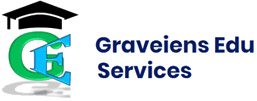Introduction:
In today’s rapidly evolving educational landscape, the integration of technology has given rise to innovative approaches to teaching and learning. Blended learning, the strategic combination of online and in-person education, has emerged as a powerful pedagogical model. By leveraging the strengths of both digital resources and traditional classroom settings, blended learning offers a flexible and personalized approach to education. In this blog, we explore the concept of blended learning, its benefits, and strategies for finding the perfect mix of online and in-person education.

Understanding Blended Learning:
Blended learning combines face-to-face interactions in a physical classroom with online learning experiences. It seamlessly integrates technology to enhance and extend the learning process. This hybrid model allows students to engage with educational content online, collaborate with peers, and benefit from personalized instruction, while still providing opportunities for social interaction and hands-on learning in a traditional classroom environment.
The Benefits of Blended Learning:
a) Flexibility and Personalization: Blended learning offers flexibility in terms of time, place, and pace of learning. Students can access online resources at their convenience, allowing for personalized learning experiences tailored to their individual needs and learning styles.
b) Enhanced Engagement: The integration of multimedia, interactive activities, and gamification in online learning components captivates student attention and promotes active engagement. This increased engagement translates into a deeper understanding of the subject matter.
c) Self-Paced Learning: Blended learning empowers students to progress through content at their own pace. Online modules provide opportunities for self-directed learning, enabling students to review material or delve deeper into topics of interest.
d) Data-Driven Insights: Online platforms and learning management systems capture valuable data about student progress, performance, and engagement. Educators can use this data to gain insights, identify areas for improvement, and personalize instruction accordingly.
e) Collaborative Learning: Blended learning facilitates collaboration and communication among students through online discussions, virtual group projects, and interactive learning activities. This fosters the development of essential 21st-century skills such as teamwork, communication, and digital literacy.
Strategies for Blending Online and In-Person Learning:
a) Flipped Classroom: In a flipped classroom model, students engage with online materials (such as recorded lectures or interactive modules) before coming to class. Class time is then utilized for discussions, collaborative activities, and individualized support.
b) Rotational Model: In the rotational model, students rotate between in-person instruction and online learning stations. This allows for targeted instruction, independent practice, and one-on-one interactions with the teacher.
c) Flex Model: In a flex model, students have flexibility in choosing the time, place, and pace of their learning. They can access online resources, collaborate with peers, and receive teacher support both in and outside of the classroom.
d) Online-to-Offline Model: In this model, students start with online instruction and progress to offline activities, such as hands-on experiments or project-based tasks, that extend their understanding and application of knowledge.
Overcoming Challenges:
While blended learning offers numerous benefits, it is essential to address potential challenges. These include ensuring equitable access to technology, providing sufficient support for both teachers and students in navigating online platforms, and maintaining a balance between online and in-person components to create a cohesive learning experience.
Conclusion:
Blended learning strikes a balance between the advantages of online and in-person education, offering a powerful and flexible approach to teaching and learning. By leveraging technology and fostering personalized instruction, blended learning enhances engagement, promotes collaboration, and empowers students to take ownership of their learning. As we continue to explore the possibilities of blended learning, it is crucial to adapt instructional strategies, provide adequate support, and prioritize the seamless integration of online and in-person components. By finding the perfect mix, educators can create dynamic learning environments that meet the diverse needs of today’s learners and prepare them for success in the digital age.


Comments 0